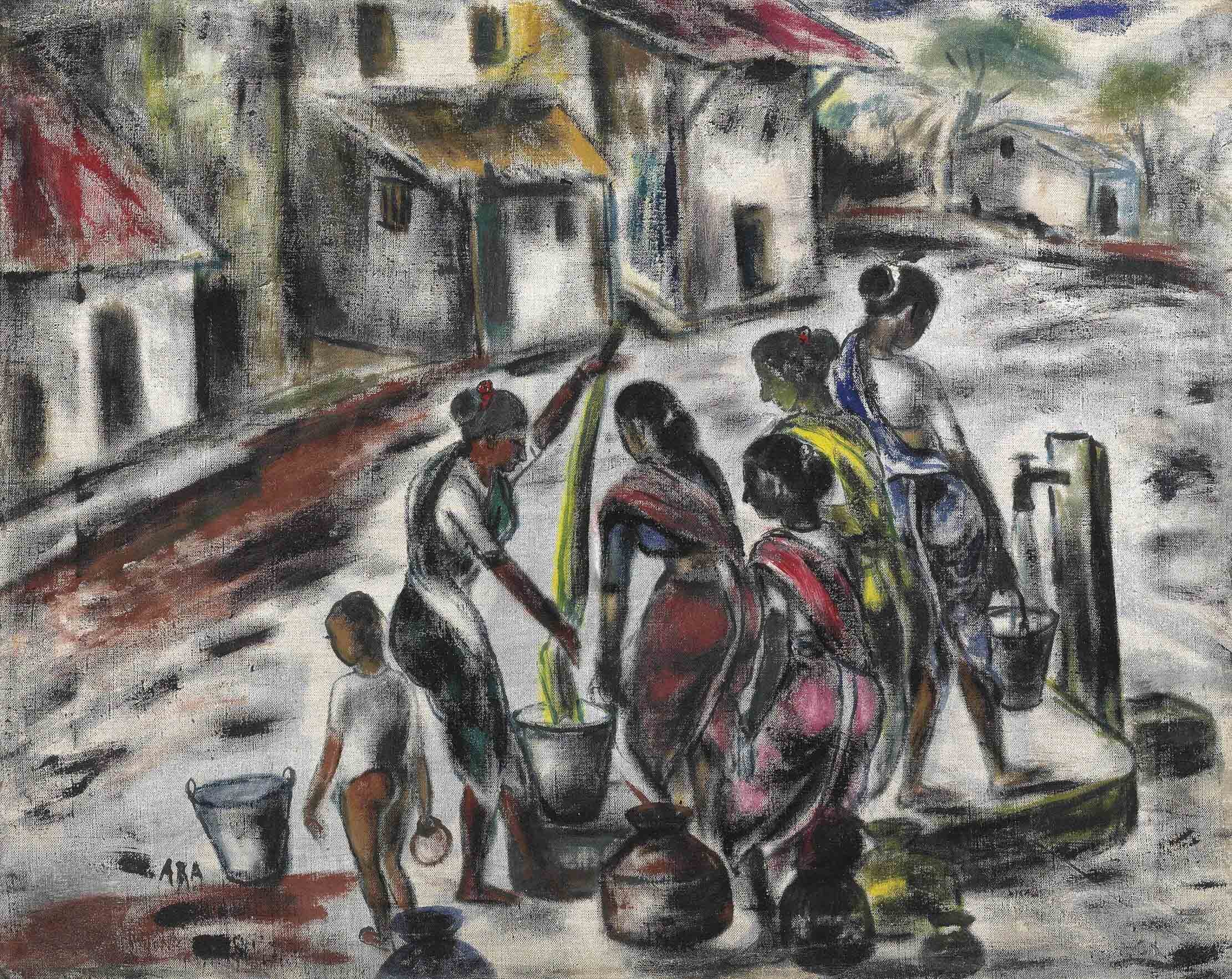Krishnaji Howlaji Ara was an Indian painter and is seen as the first contemporary Indian painter to meticulously use the female nude as a subject. He was a part of the Progressive Artists' Group in Bombay and was a founder of the Artists' Centre in Mumbai. Opinions about Ara's works remain divided with his critics accusing them of lacking perfection and not referenced from life.
In 2017, curator Qaroon Thapar 22 works of Ara in an exhibition in Mumbai called "Privately Ara". Ara hosted his first solo show at the Chetana Restaurant in Bombay in 1942 which was a runaway success. He joined the Progressive Artists' Group which included M F Hussain, H A Gade, S H Raza, F N Souza and Sadanand Bakre in 1948.
The group set up the Artists' Centre at Kala Ghoda, opposite the Prince of Wales Museum. He held several shows with the group but with Souza, Raza, Gade and Bakre leaving India, the group became undone. From 1948 to 1955, Ara held several solo and group shows in Mumbai, Ahmedabad, Baroda and Calcutta and later had solo exhibitions across Eastern Europe, Japan, Germany and Russia.
In 1963 he exhibited his "Black Nude" series in Mumbai and was part of the inaugural show at the Pundole Art Gallery. Ara began his career doing landscapes and paintings on socio-historical themes but he is best known for his still life and nude paintings. Several of his works deal with still life and human figure studies. While he initially used watercolours and gouaches, where his use of the impasto effect often made them resemble oil paintings, he later moved on to the use of oil paints.
His successful execution of thin pigmentation recalled his initial work with water colors as seen in the painting "Woman with Flowers". Ara work reflected a deep influence of French modern artists, specially Paul Cezanne. Ara won the Governor's Award for painting in 1944 and a Gold Medal from the Bombay Art Society for his canvas "Two Jugs" in 1952.




